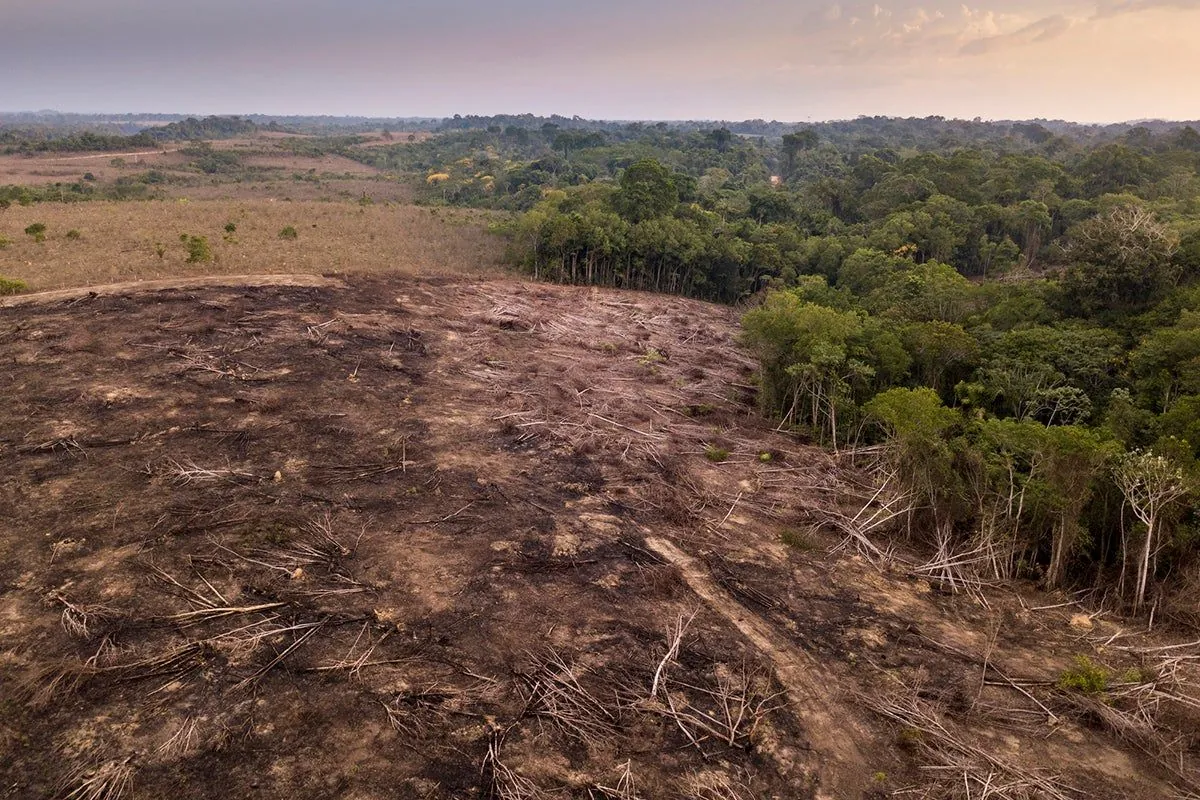Amazon Deforestation Slows, but Cerrado Faces Increased Threat
Brazil reports a 46% decrease in Amazon deforestation, the largest reduction since 2016. However, the Cerrado savannah experiences a 9% increase in vegetation loss, highlighting the need for comprehensive conservation efforts.

Brazil has reported a significant decrease in Amazon deforestation, with a nearly 46% reduction compared to the previous year. This marks the largest decline since 2016 when the current measurement method was implemented.
According to government satellite data, the Amazon rainforest lost approximately 4,300 square kilometers (1,700 square miles) of land in the past 12 months. This area, roughly the size of Rhode Island, represents a substantial improvement in conservation efforts.
Luiz Inácio Lula da Silva, Brazil's president, has pledged to achieve "deforestation zero" by 2030. This commitment comes after a period of increased deforestation under the previous administration of Jair Bolsonaro, which saw forest loss reach a 15-year high.
The Amazon rainforest, covering an area twice the size of India, plays a crucial role in global climate regulation and biodiversity conservation. It absorbs large amounts of carbon dioxide, contains about 20% of the world's freshwater, and hosts an estimated 10% of the planet's known biodiversity.

Despite the overall positive trend, challenges remain. July 2024 saw a 33% increase in tree cutting compared to July 2023, partly attributed to a strike by officials at federal environmental agencies. João Paulo Capobianco, executive secretary for the Environment Ministry, addressed this issue during a press conference in Brasília.
"A strike by officials at federal environmental agencies contributed to this surge."
While the Amazon has shown improvement, Brazil's vast savannah, known as the Cerrado, faces increased threats. Deforestation in this region increased by 9%, with native vegetation loss reaching 7,015 square kilometers (2,708 square miles) - an area 63% larger than the destruction in the Amazon.
The Cerrado, often called the "upside-down forest" due to its deep root systems, is the world's most biodiverse savannah. It covers about 22% of Brazil's land area and contains 5% of the world's biodiversity. However, it receives less protection than the Amazon rainforest.
Isabel Figueiredo, a spokesperson for the nonprofit Society, Population and Nature Institute, highlighted the Cerrado's vulnerability: "The Cerrado has become a 'sacrificed biome.' Its topography lends itself to mechanized, large-scale commodity production, and it has little legal protection."
Experts emphasize that long-term deforestation control requires more than monitoring and law enforcement. Paulo Barreto, a researcher with the nonprofit Amazon Institute of People and the Environment, suggests creating new protected areas, improving transparency in the cattle industry, and implementing stricter rules for the financial sector to prevent funding deforestation.
As Brazil continues its efforts to protect its diverse ecosystems, balancing conservation with economic development remains a significant challenge. The contrasting trends in the Amazon and Cerrado highlight the need for comprehensive and tailored approaches to preserve these vital biomes.


































